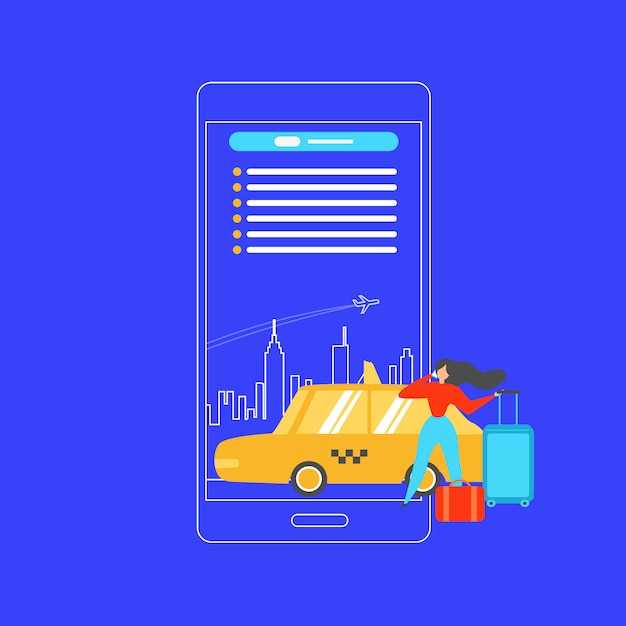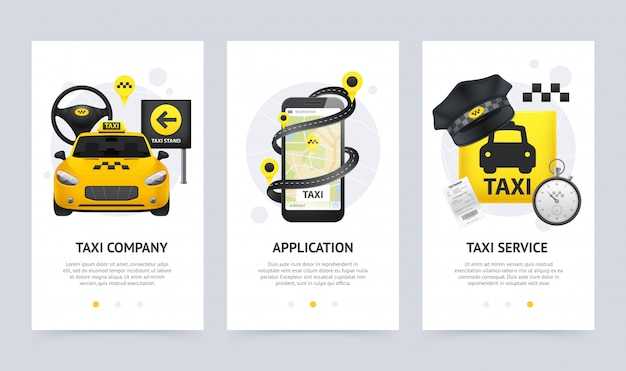Use the Adelaide Taxi Fare Calculator to estimate your ride cost instantly. Enter pickup and drop-off details to generate a fare estimate in seconds. The tool relies on live rate data and distance to produce a clear figure for your next trip in transportation across Adelaide.
The calculator pulls information from licensed providers, adds time and distance factors, and includes any added charges such as airport fees or night-time surcharges. It also shows card withdrawals so the final total remains transparent before you confirm the ride.
For foreign travellers or local first-timers, the tool helps you compare options without leaving the page, and it updates as rates change so you always have a reliable forecast before you ride. The satss signals indicate peak zones and guide you toward calmer windows for travel.
Plan ahead and save time and money. You can input multiple pickup points, see cost variations, and adjust details to see how the total shifts. This approach keeps you in control and helps you always pick an optimal option for your trip.
Base Fare and Flag Fall in Adelaide Taxis

Recommendation: Check the flag fall before boarding; the base fare starts the meter, plus distance and time. While prices vary by operator and year, expect a flag fall around AUD 4.50–5.00, with per-km rates near AUD 2.00–2.40 and waiting time around AUD 0.40–0.70 per minute. For passengers who visit Adelaide, taxis look like a reliable option, especially when walking or buses would come up short. The first charge is the flag fall; the licence rules apply, and the fare will show on the meter, or on your receipt if you purchased via an app. The hirer pays the fare; most taxis accept a bank card, and tips are optional depending on service. Rates may vary along routes.
| Component | Typical Adelaide rate (AUD) | Notes |
|---|---|---|
| Flag fall / Base fare | 4.50–5.00 | Charged at start; varies by operator and licence year |
| Per kilometre | 2.00–2.40 | Distance-based; day vs night variations |
| Waiting time | 0.40–0.70 per minute | Applied during delays or stops |
| Airport surcharge | Varies (approx. 6–9) | Applies to rides to/from airport terminals |
Distance Rates: How Kilometres Affect Your Fare

Start with a simple rule: base fare plus a per-kilometre charge sets the cost. For a typical Adelaide taxi, the base fare is around AUD 4.50–5.00 and the per-kilometre rate is about AUD 2.00–2.40. Doing this gives a quick estimate: multiply kilometres by the rate, then add the base. This helps your budget and looks reliable whether you’re paying post-paid, with a visa, or using a sim-only plan while overseas in local traffic.
What drives the distance-based fare
Distance is the main driver, but the route matters. Major routes and detours can add minutes, triggering stand-waiting charges. An airport levy may be added on top of the distance charge in trips that involve the airport. Waiting time is billed per minute, so added stand-waiting can push the total beyond the distance-only calculation. For wheelchair users, wheelchair-accessible taxis might have different base or per-kilometre figures, based on the vehicle type. The maximum payable isn’t fixed by kilometres alone; time, route choice, and added fees all combine. Whenever you check a fare estimate, look for all elements that are based on the route and timing, including any requirement or added payment. This looks like doing the right thing and helps you plan until the trip ends.
Practical steps to estimate and save
Do a quick estimation: estimate the route length in kilometres, multiply by the per-kilometre rate, then add the base fare and any stand-waiting charges. For example, an 8 km route at AUD 2.20 per km plus a base AUD 4.80 yields 17.60 + 4.80 = 22.40; if 2 minutes waiting at AUD 0.60 per minute adds 1.20, total comes to about 23.60. If an levy is added, such as an airport levy, include it. Start your trip with a clear route 和 consider the likelihood of delays; this might look different at peak times or on major routes. For 预算-minded riders, look for options that minimize stand-waiting. For overseas travellers paying by visa or using a sim-only plan, the distance-based structure stays the same, so you can estimate before you ride. The payment requirement for a post-paid account might show the same breakdown; you just need to checked the meter once you arrive to confirm the final total.
Time-Based Charges: Waiting Time and Traffic Delays
Check the fare estimate before you book and budget for waiting time. A transparent upfront quote helps you plan, so youve got a reliable idea of what you’ll pay if the ride stalls along busy streets. Waiting time starts after a 2-minute grace period, with charges of 0.50–1.00 AUD per minute. A 5-minute pause adds 2.50–5.00 AUD; 10 minutes can add 5.00–10.00 AUD, depending on the base fare and distance. If theyre aware of the breakdown, you know exactly where the cost comes from.
Traffic delays affect duration and final fare. On busy corridors around the CBD and along major routes, trips can run 10–20% longer than expected. For a 6–12 km ride, that translates to about 3–6 extra minutes; in extreme congestion, plan for 15–25% more time. During peak days you may want to leave earlier to accommodate these delays, especially when hotels and events cluster in the area.
Use the post-ride receipt to verify exact waiting minutes and add-ons. This is highly useful when you compare offers from different operators or when you’ve got meetings at hotels, entertainment venues, or around popular districts. If you travel with sim-only cards or a reliable telecommunications network, you’ll enjoy smoother live estimates and fewer data gaps that can affect time reporting. Card payments simplify final settlement, and a stable network keeps the app in sync with the meter, so you’ve got accurate data throughout the ride. The entertainment options in-app can be enjoyed without draining data, thanks to thoughtful offers from network partners, including Korean telecommunications providers.
How charges are calculated
Base fare plus distance determines the ride cost, plus waiting time and any tolls or surcharges. Wait times are billed after the grace period, so plan to leave earlier if you’ve got appointments at hotels, airports, or events. If you leave late or the driver detours, the meter captures those minutes and adds them to the final total. With clear time-and-distance breakdowns, you can anticipate costs in advance and adjust plans along the way, making the process friendly and predictable for you.
Night and Peak Hour Surcharges in Adelaide
Book outside peak hours to keep costs down. Rides after dark carry a night surcharge, and weekday demand creates peak-hour rates on busy corridors open to major routes across the city.
Surcharges appear on the meter or in fare estimates as a line item. They can be a fixed amount or a percentage of the base fare, depending on the operator’s accreditation. In Adelaide, expect a night charge for late-evening rides and a peak surcharge during busy weekday windows; the exact figures vary by distance and kilometre travelled, so use a fare calculator for an average view before you ride.
Popular trips such as from the city centre to Glenelg or between CBD hubs and major suburbs can trigger higher evening rates due to demand. The meter shows the extra charges clearly, and you’ll see how kilometres from the origin influence the total. If you want a precise picture, compare open estimates for a ride-on from kiĺometre 0 up to longer distances.
To cut costs, plan on Thursdays when demand patterns shift in many corridors, and consider early bookings to avoid peak windows. Short hops within the inner ring typically stay within the lower end of the range, while longer journeys in peak periods increase the overall cost.
Payment and access options can shape your total. Some operators provide multi-currency fare estimates, sim-only data tools, or open receipts to help you keep track. Ensure you receive a clear receipt showing metre increments, rates, and any surcharges, and keep a copy for your records. If you manage expenses through a bank like westpac or use a ride-on card, confirm compatibility with the chosen operator before you ride.
In practice, plan in advance, use the fare calculator to compare costs from 从 your origin to kilometre distance milestones, and choose routes that minimize peak exposure. By understanding access to the meter, drivers’ rate structures, and the typical late-night windows, you’ll keep averages predictable and avoid surprise spikes on major trips across Adelaide.
Airport and Suburb Fees You Might Encounter
Always check the airport pickup surcharge first; this fixed fee is added to the fares and appears in the result of your estimate, helping you plan good value trips well. This applies across locations in the state and commonwealth frameworks, so you know what to expect before you ride.
What fees to expect
- Airport pickup surcharge: a fixed amount typically ranging from AUD 3 to AUD 5 when entering or exiting the airport precinct; applies to most vehicle types and coverage areas, and is clearly shown in fare results.
- Waiting and stand-waiting charges: waiting time accrues after a short grace period; typical rates are about AUD 0.60–1.50 per minute, with a stand-waiting option separate from standard waiting.
- Distance-based (kilometre) fares: per-kilometre rates vary by vehicle class; standard taxis often charge around AUD 1.20–2.00 per kilometre, so longer trips to suburbs add up quickly.
- Destination or delivery fees: certain locations near hotels or accommodation hubs may incur small destination fees; check the app to avoid surprises.
Tips to keep fares reasonable
- Enter precise locations and check coverage in the app to avoid inflated results; mismatch in locations can raise the total trip cost.
- Seek fixed airport fees when possible; some operators offer flat-rate airport pickups for a predictable fare.
- Pre-book during busy periods to reduce stand-waiting and waiting charges; this is extremely helpful when heading to hotels or accommodation.
- Compare options for a single trip to hotels, accommodation or conference venues to find good value and ensure commonwealth rules are respected by the provider.
- Always have the result checked before you start the journey; this helps you choose the best vehicle and route for your trip and ensures required charges are disclosed.
Minimum Fare, Booking Fees, and Fixed Charges
Recommendation: Start with a baseline minimum fare around AUD 4.50–5.50, then add a booking fee of about AUD 1.50–3.00 and any fixed charges that apply to your trip.
The minimum fare combines a flagfall plate on the meter with distance and time components. In practice, a four-dollar base is common for short single trips, with distance and time pushing the total higher as you pass through distance blocks near clinics or city lodges. The plate on the meter shows the current rate, and you will notice distance and arrival times update as you ride.
Booking fees vary by networks and are currently in the range of AUD 1.50–3.00 per ride. This fee brings the total even for short trips and is charged whenever you reserve a taxi in advance or via mobile apps. Some networks show a single fixed charge that doesn’t depend on distance.
Fixed charges cover airport pickup, stop charges, and service surcharges. Airports or special pickup points may add a fixed fee (often AUD 3–5), plus per‑stop charges on longer trips. If your arrival point is a lodge or hotel, consider the distance to the door; plan for possible extra fees at the entrance. When you know the stop points in advance, you can model the total more accurately and avoid surprises.
To stay safe, pay by cards or mobile wallets via trusted apps, and confirm the total before arrival. If you ride across different industry networks, check which kinds of fees apply for your route, and choose options that fit your budget. Whenever you can, use walking for short distances (where feasible), and reserve tipping only when service is above expectations. You can also check the route details on google maps to verify distance and arrival times.
How to Use the Fare Calculator: Input, Units, and Result
Enter exact pickup and drop-off locations, then select kilometre as the unit. The calculator updates instantly, using current rates and any applicable surcharges to give a quick, reliable estimate.
Inputs and Units
Input fields require pickup and drop-off locations precisely. You must choose a currency and a distance unit. Pick kilometres (kilometre) or miles, then select the ride type if available. The calculator pulls data from their networks and applies base fare, distance, and time rules. Ensure place names are clear to avoid mismatches, especially in busy locations where traffic looks different. For further accuracy, add date and time if the option exists; this helps reflect peak pricing and current patterns that affect the estimate. You must review the input to avoid spending more than planned on a single ride or across several journeys.
To test alternatives, try different locations or routes and compare results; this helps you plan the most economical option for that day.
Understanding the Result
The result provides a breakdown: base fare, distance charge (per kilometre), time-based charges if applicable, and any surcharges. The total shown is the current estimate for the selected ride type and route. Distances appear in the chosen unit; you can switch to a different unit to see how the figure changes.
Use the readout to plan trips across various places and networks, and to manage spending on busy days. If the estimate exceeds your target, adjust the start or end points or ride type, then re-run the calculation for another journeys to find the best option.



评论